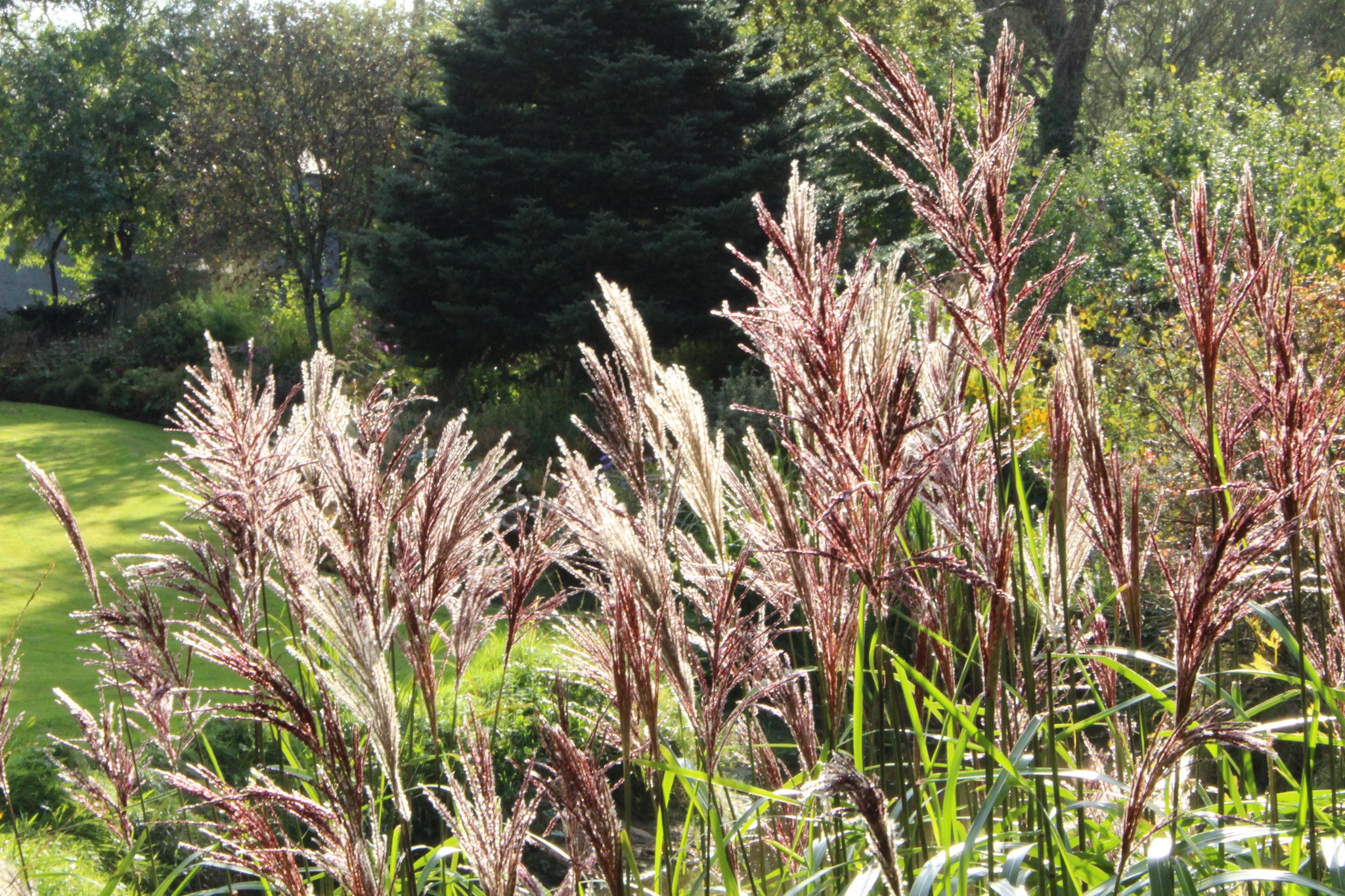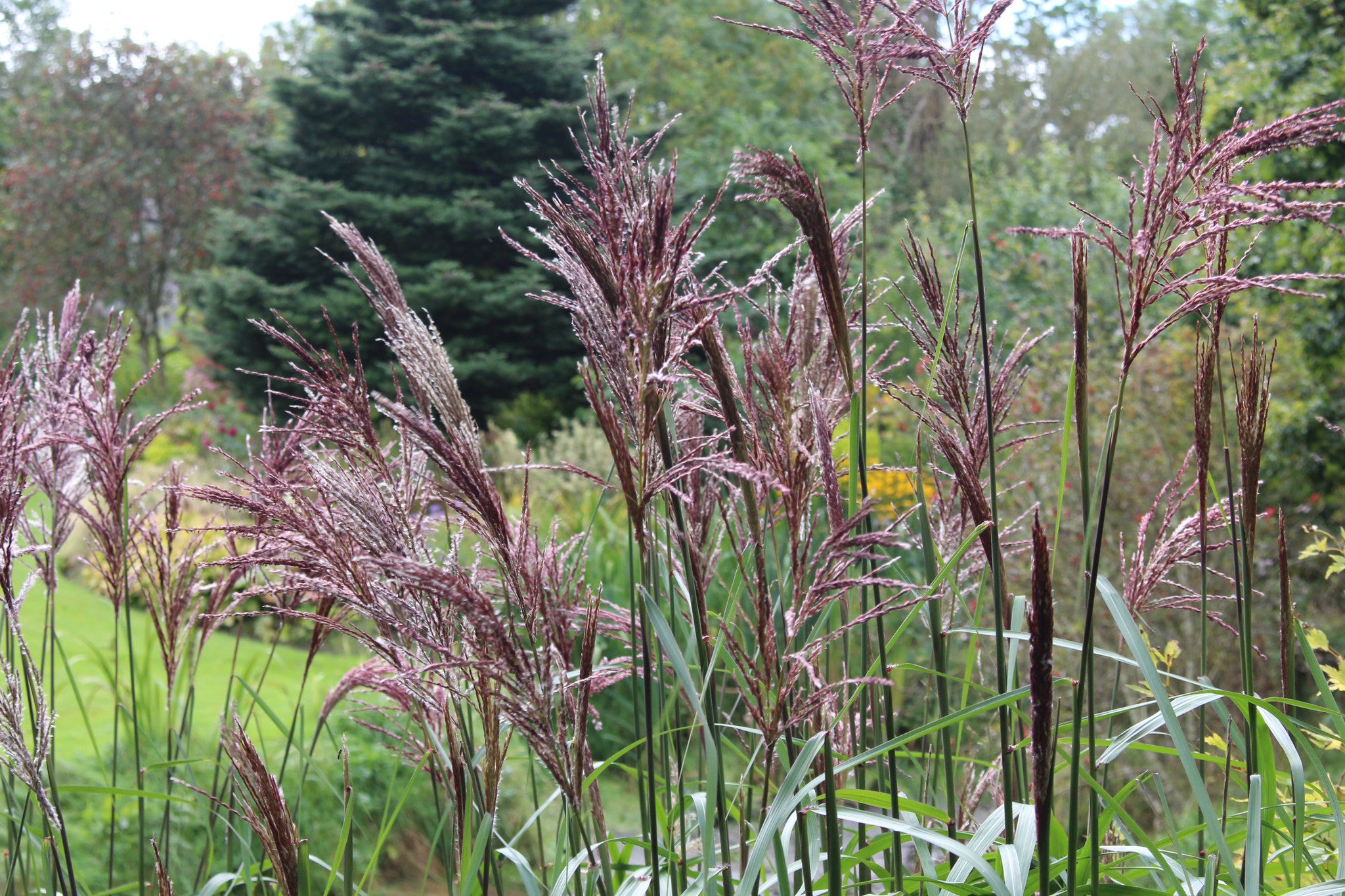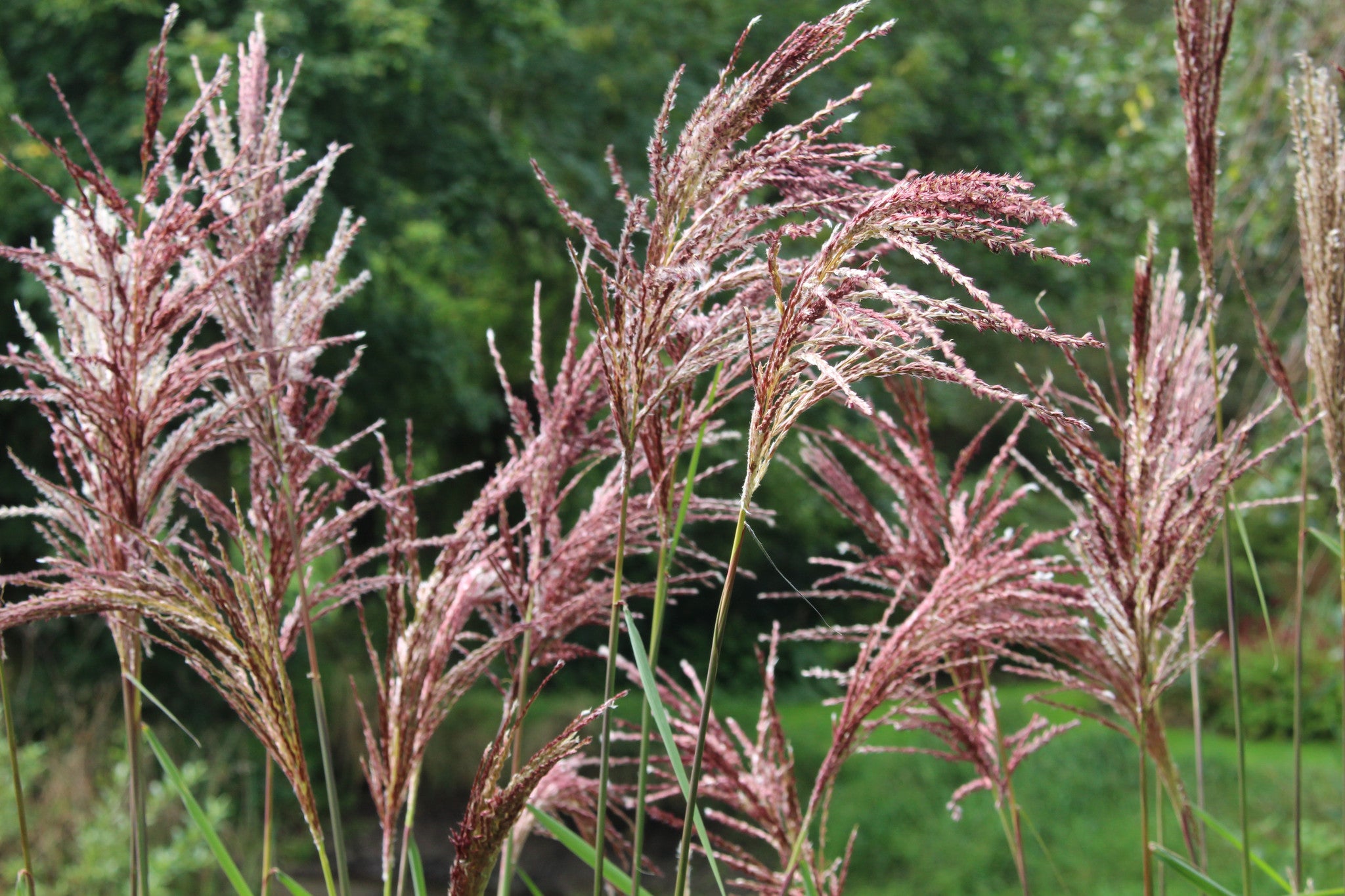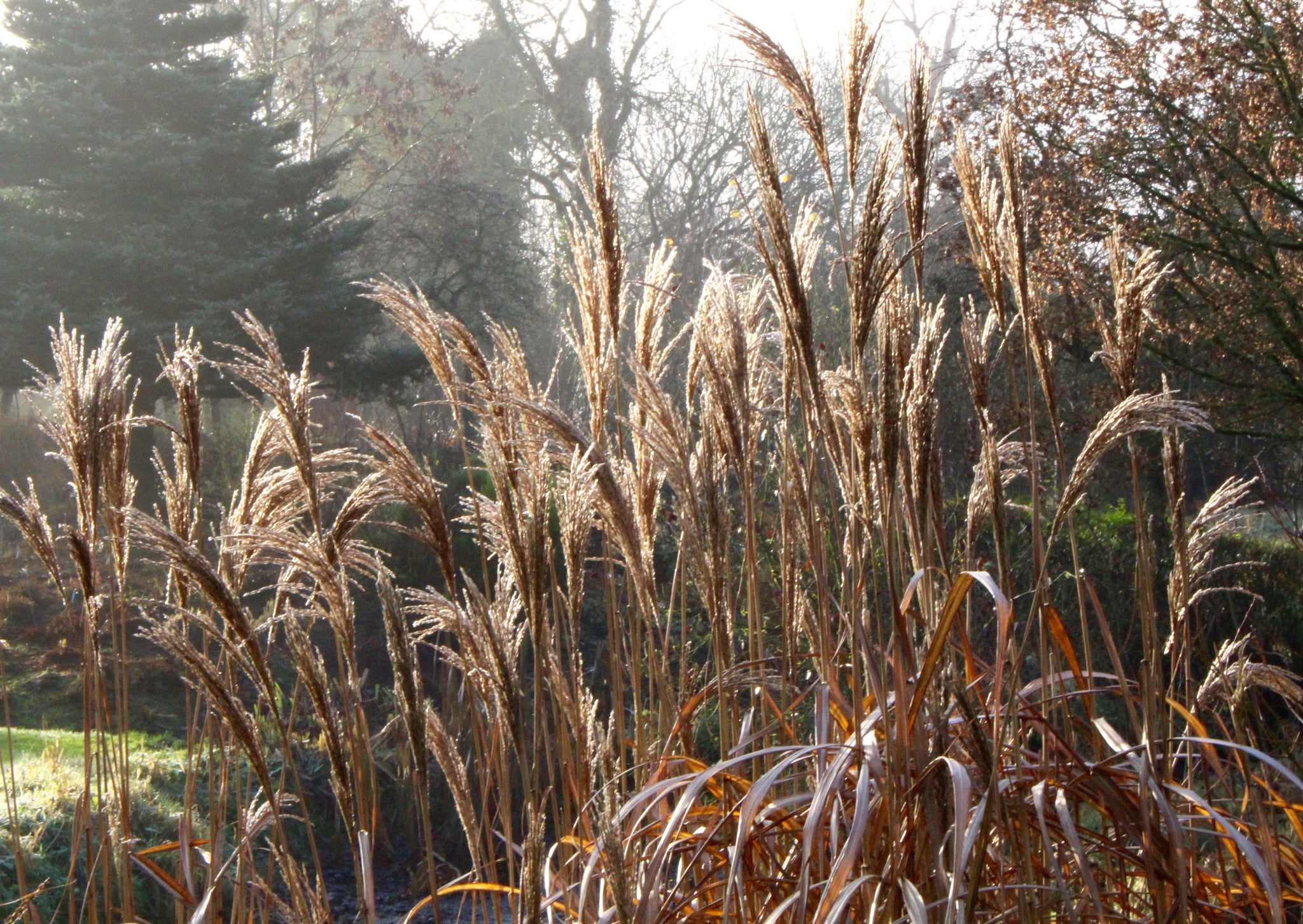Miscanthus sinensis 'Malepartus'
Approx. 0.5 litre pot
About this cultivar:
Miscanthus sinensis 'Malepartus' was introduced by German nurseryman and plant breeder, Ernst Pagels (1913-2007). He wanted to develop early-blooming Miscanthus cultivars, which flowered in short growing seasons. One of his breakthroughs is Miscanthus sinensis ‘Malepartus’. While most Miscanthus bloom in autumn, ‘Malepartus’ sends up its flowers in midsummer. Flowers open pink, change to golden red in autumn, and become silvery white in winter. Its foliage turns a beautiful bronze-burgundy in autumn.
- Position: Full sun, partial shade
- Soil: Almost any soil, grows well in Ballyrobert
- Flowers: July, August
- Other features: -
- Hardiness: Fully hardy, grows well in Ballyrobert
- Habit: Clump forming, Tufted
- Foliage: Semi evergreen
- Height: 180 - 210 cm (6 - 7 ft)
- Spread: 90 - 120 cm (3 - 4 ft)
- Time to full growth: 2 to 5 years
- Plant type: Herbaceous Perennial, Grass like
- Colour: Green, yellow, white
- Goes well with: Helianthus, Echinacea, Coreopsis or Sedum
About this genus:
Miscanthus gets it name from the Greek for stem, miskos, and flower, anthos. It is commonly known as Maiden Grass. It is renowned for its versatility as a tall, perennial, ornamental grass. New introductions from Germany and Japan have improved stature, foliage colour, and flower heads.
Many of the popular hybrid Miscanthus are variegated (e.g., Miscanthus 'Morning Light') and many Maiden grasses also have attractive seed heads. Variegated ornamental grasses offer a colour contrast in the garden as well as a pleasing habit.
A few selections of Miscanthus sinensis are controversial because they re-seed excessively, primarily in disturbed sites. We continually discard any Miscanthus that displays this tendency.
Try pairing Miscanthus with flowering plants such as Helianthus, Echinacea, Coreopsis or Sedum. Mainden Grass also looks great in large drifts where the leaves and flower heads can be seen swaying in the wind. It is a tough, low maintenance plant which makes it perfect for wet or dry gardens in any situation apart from full shade. Miscanthus is versatile from a design standpoint; it can be used as a specimen, for massing or screening, in large containers, or at the pond's edge. I say plant this grass where its wonderful winter interest can be enjoyed!








